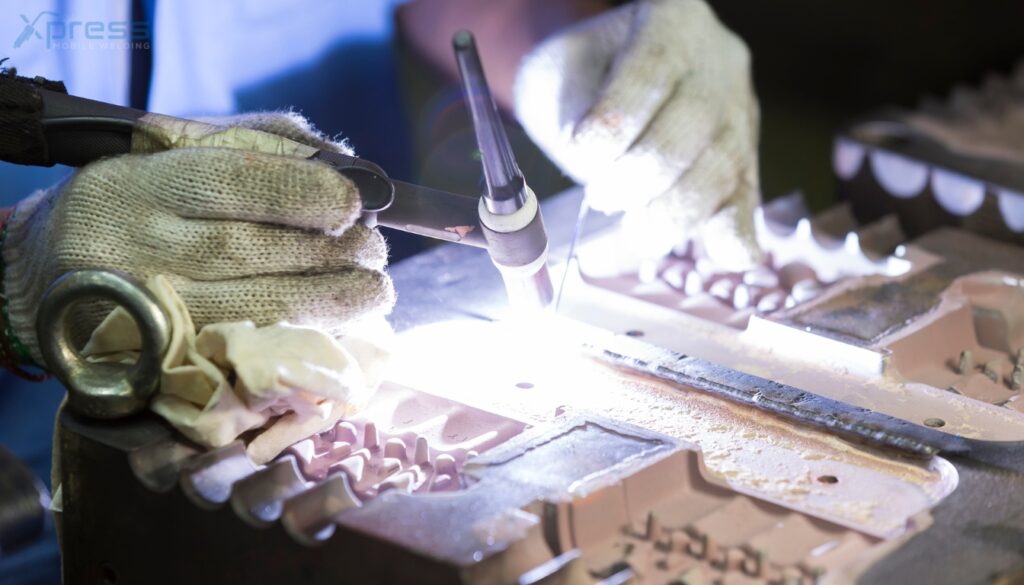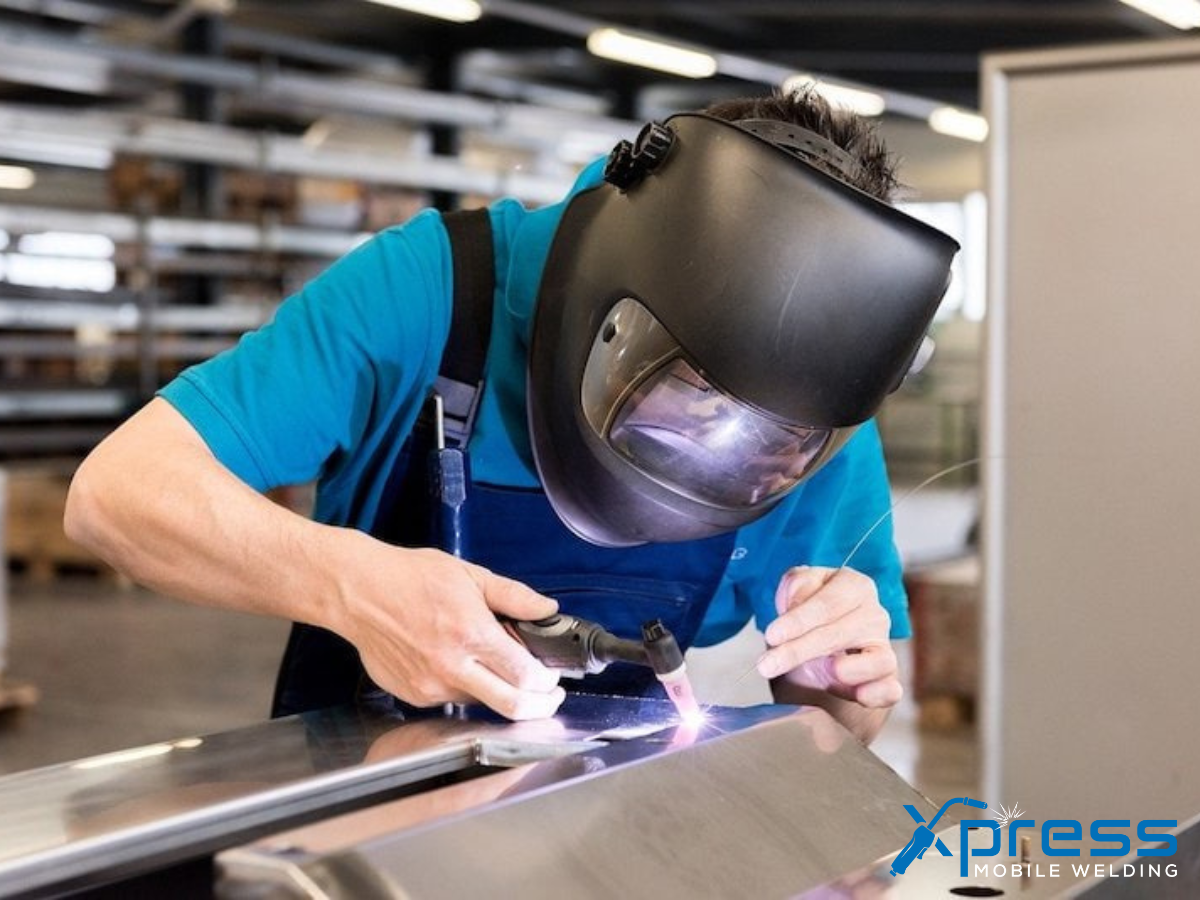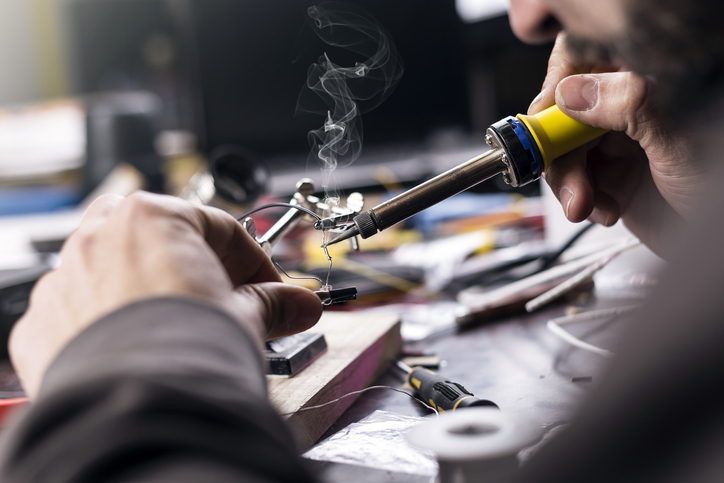Introduction to Welding Techniques
Welding is an essential process in metal fabrication service, enabling the joining of materials to create structures and components. Among the various welding methods available, MIG (Metal Inert Gas), TIG (Tungsten Inert Gas), and Stick (Shielded Metal Arc Welding) stand out as the most commonly used techniques. Each of these methods has its unique characteristics, advantages, and applications. Understanding these differences is crucial for anyone involved in welding, whether you're a hobbyist or a professional.

What Is MIG Welding?
MIG welding, or Metal Inert Gas welding, is a semi-automatic or automatic process that uses a continuous solid wire electrode fed through a welding gun. This method is known for its speed and ease of use, making it popular among both beginners and experienced welders. The process involves creating an electric arc between the wire electrode and the workpiece, which melts both materials to form a strong bond.
Advantages of MIG Welding
Speed: MIG welding can be performed quickly due to its continuous wire feed. Ease of Use: With minimal training, beginners can quickly learn the basics. Versatility: Suitable for various metals including steel, aluminum, and stainless steel. Clean Finish: Produces less spatter compared to other methods. Less Post-Weld Cleanup: Requires less cleaning time after welding.Disadvantages of MIG Welding
Equipment Costs: Initial setup costs can be higher compared to Stick welding. Less Effective Outdoors: Wind can disrupt the shielding gas, affecting weld quality. Thickness Limitations: Not ideal for extremely thick materials without adjustments.What Is TIG Welding?
TIG welding stands for Tungsten Inert Gas welding. It utilizes a non-consumable tungsten electrode to produce the weld. A filler material may be used but isn't necessary in all cases. This method provides high-quality welds with excellent control over heat input.
Advantages of TIG Welding
Precision: Offers superior control over weld bead size and heat input. Clean Welds: Produces very little spatter and requires minimal cleanup. Versatile Materials: Can be used on thin or thick materials across various metals. No Flux Required: The shielding gas protects the weld area without requiring additional flux.Disadvantages of TIG Welding
Skill Requirement: Requires more skill and experience than MIG or Stick welding. Slower Process: Generally takes longer due to meticulous control needed by the welder. Higher Costs: Equipment tends to be more expensive than other methods.What Is Stick Welding?
Stick welding, also known as Shielded Metal Arc Welding (SMAW), uses a consumable electrode coated in flux to create an electric arc between the electrode and the metal workpiece. The flux coating generates gases that protect the molten weld pool from contamination.
Advantages of Stick Welding
Cost-Effective: Tools and equipment are relatively inexpensive. Versatile Applications: Works well on dirty or rusty metals where other processes might fail. Portability: Equipment is easy to transport; great for mobile welding in Phoenix or remote locations. Excellent Penetration: Provides deep penetration on thicker materials.Disadvantages of Stick Welding
Slower Speed: Compared to MIG welding, it generally takes longer. More Cleanup Required: Leaves slag that needs to be cleaned off after welding. Limited Thin Material Use: Not ideal for very thin materials due to burn-through risks.MIG vs TIG vs Stick: Which Method Should You Use?
Deciding between MIG, TIG, or Stick welding can depend heavily on your specific project requirements and conditions:
- For larger projects needing speed and efficiency—like automotive repairs—MIG might be your best bet due to its quick operation and ease of use. If precision is paramount—such as in aerospace applications—then TIG would likely suit your needs best because it allows for meticulous control over the weld bead's size and shape. On the flip side, if you're working outdoors where conditions aren't ideal or on rusted metals that require versatility—Stick welding could prove advantageous thanks to its robustness in various environments.
Comparing Efficiency Among Methods
| Feature | MIG | TIG | Stick | |-------------------|----------------------------------|----------------------------------|----------------------------------| | xpress mobile welding Speed | Fast | Moderate | Slow | | Skill Level | Beginner-friendly | Requires advanced skills | Intermediate | | Equipment Cost | Medium | High | Low | | Versatility | High | Very high | Moderate | | Cleanup | Minimal | Minimal | Significant |
Overview of Common Applications
When To Use MIG Welding
MIG welding is perfect for tasks like:
- Automotive bodywork Fabricating metal furniture General repair work Manufacturing processes
When To Use TIG Welding
Common applications include:
- Aerospace components Artistic metalwork Thin-walled sections Stainless steel fabrications
When To Use Stick Welding
Ideal scenarios are:
- Outdoor construction projects Repairing heavy machinery Pipeline work General-purpose maintenance
The Importance of Equipment Quality
Welding equipment plays a pivotal role in determining success in any project involving metal fabrication service or mobile welding in Phoenix.
Choosing Quality MIG Equipment
Quality MIG machines should offer features like adjustable voltage settings and reliable wire feeds for consistent performance across different materials.
Investing in Reliable TIG Gear
For TIG equipment, look for models with high-frequency start capabilities that ensure cleaner arcs with minimal contamination during use.
Selecting Effective Stick Welders
Stick welders should ideally have adjustable amperage settings that accommodate various electrode sizes while ensuring smooth arcs under diverse conditions.
Safety First! Essential Guidelines
Welding poses inherent risks; thus adhering strictly to safety protocols cannot be overstated!

Protective Gear Must-Haves
Eye protection (welding helmets) Fire-resistant clothing Gloves designed specifically for each type (MIG/TIG/Stick)Ventilation Needs
Always ensure proper ventilation when using any type of arc-welding process since fumes generated can pose health hazards if inhaled long-term.
Expert Tips For Beginners
Whether you prefer Mig Welding, Tig Welding or Stick methods there are foundational tips every beginner should keep close at hand:
Practice Makes Perfect
Work on scrap pieces before tackling actual projects! This helps build muscle memory while familiarizing you with different techniques specific to each method being explored!
Understand Your Materials
Know what types of metals you'll primarily work with; this knowledge will guide effective selection between these three techniques based on their properties!
Frequently Asked Questions
Q1: What is better for beginners - MIG or TIG?
A1: Generally speaking, many experts recommend starting with MIG due to its user-friendly nature allowing first-time welders easier learning curves!

Q2: Can I use TIG outdoors?
A2: While possible under certain conditions like calm weather; wind can disperse shielding gases potentially leading toward defective joints!
Q3 : What kind of projects benefit most from stick-welding?
A3 : Heavy-duty tasks such as repairing industrial equipment typically favor stick-welding because they tolerate dirtiness well along with producing strong bonds even under challenging circumstances!
Q4 : How do I maintain my welder?
A4 : Regular cleaning routines combined with checking wiring connections & coolant levels help prolong longevity whilst enhancing performance standards across all types used within workshops alike!
Q5 : Do I need special training before attempting these processes?
A5 : While not mandatory per se; formal training programs provide invaluable insights into proper techniques minimizing risks associated while maximizing outcomes achieved through practiced hands-on experiences!
Q6 : Can I combine multiple methods within one project?
A6 : Absolutely! Many professional fabricators utilize combinations depending upon varying requirements encountered throughout complex builds ensuring optimal results delivered efficiently across diverse challenges faced daily!
Conclusion
As we wrap up our exploration into “MIG vs TIG vs Stick: Which Method Should You Use?” it becomes evident that no single method reigns supreme universally—it all boils down to your specific needs! Each technique has its strengths tailored toward unique applications demanding different skill sets & tools required accordingly while taking into account factors such as environment along with desired results expected ultimately achieved through effective execution employed within chosen pathways traversed throughout experiences gained along journeys embarked upon! Whether you lean toward Mig Welding’s speediness , Tig’s precision artistry ,or rely upon trusty stick capabilities when facing tougher terrains remember one thing—practice regularly alongside prioritizing safety measures always yields rewarding outcomes worth celebrating together amongst fellow craftsmen who share passions igniting sparks creatively illuminating pathways forward destined toward greatness achieved beyond limits imposed previously imagined!